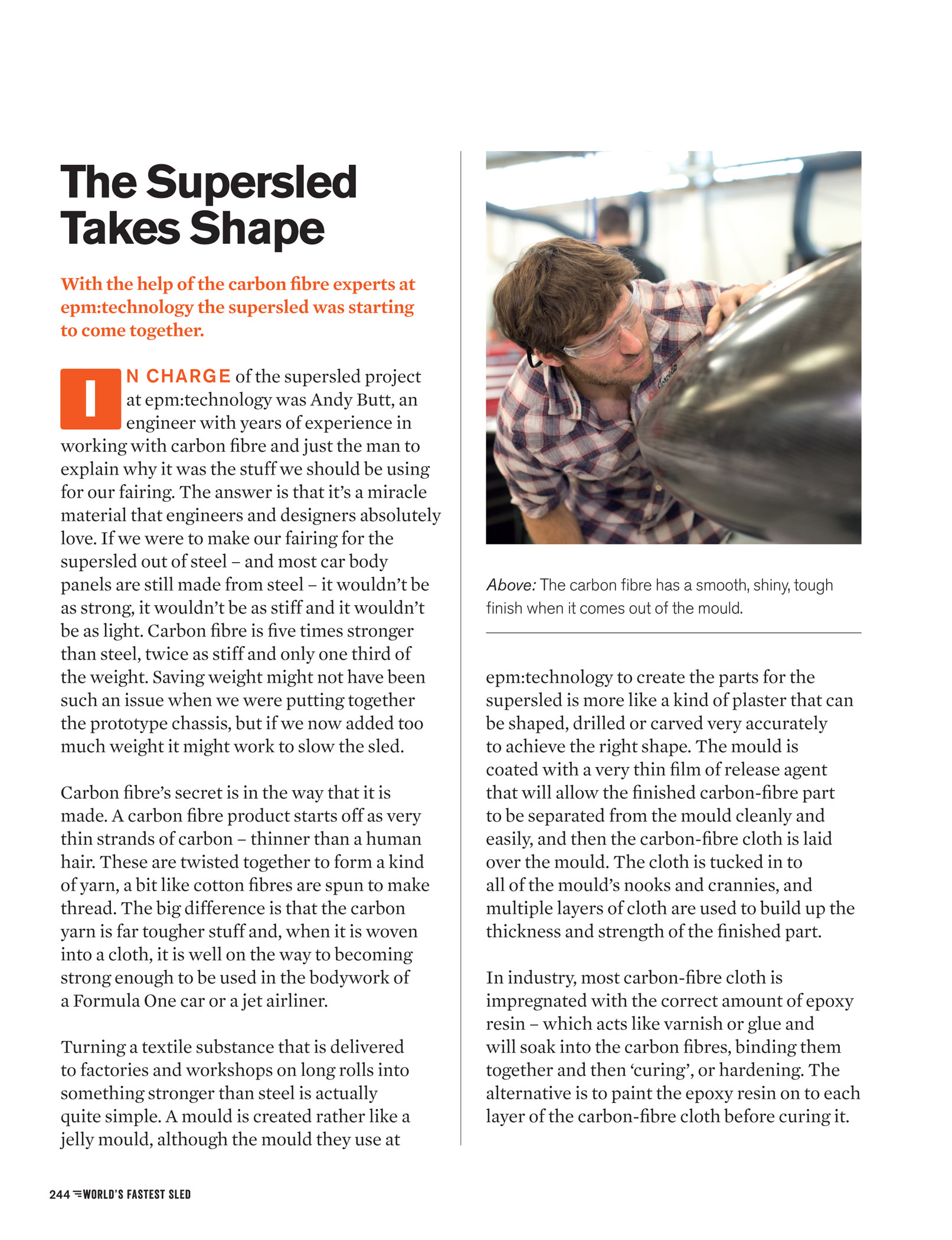
The Supersled
Takes Shape
With the help of the carbon fibre experts at
epm:technology the supersled was starting
to come together.
N CHARGE of the supersled project
at epm:technology was Andy Butt, an
engineer with years of experience in
working with carbon fibre and just the man to
explain why it was the stuff we should be using
for our fairing. The answer is that it’s a miracle
material that engineers and designers absolutely
love. If we were to make our fairing for the
supersled out of steel – and most car body
panels are still made from steel – it wouldn’t be
as strong, it wouldn’t be as stiff and it wouldn’t
be as light. Carbon fibre is five times stronger
than steel, twice as stiff and only one third of
the weight. Saving weight might not have been
such an issue when we were putting together
the prototype chassis, but if we now added too
much weight it might work to slow the sled.
I
Carbon fibre’s secret is in the way that it is
made. A carbon fibre product starts off as very
thin strands of carbon – thinner than a human
hair. These are twisted together to form a kind
of yarn, a bit like cotton fibres are spun to make
thread. The big difference is that the carbon
yarn is far tougher stuff and, when it is woven
into a cloth, it is well on the way to becoming
strong enough to be used in the bodywork of
a Formula One car or a jet airliner.
Turning a textile substance that is delivered
to factories and workshops on long rolls into
something stronger than steel is actually
quite simple. A mould is created rather like a
jelly mould, although the mould they use at
244 world’s fastest sled
Above: The carbon fibre has a smooth, shiny, tough
finish when it comes out of the mould.
epm:technology to create the parts for the
supersled is more like a kind of plaster that can
be shaped, drilled or carved very accurately
to achieve the right shape. The mould is
coated with a very thin film of release agent
that will allow the finished carbon-fibre part
to be separated from the mould cleanly and
easily, and then the carbon-fibre cloth is laid
over the mould. The cloth is tucked in to
all of the mould’s nooks and crannies, and
multiple layers of cloth are used to build up the
thickness and strength of the finished part.
In industry, most carbon-fibre cloth is
impregnated with the correct amount of epoxy
resin – which acts like varnish or glue and
will soak into the carbon fibres, binding them
together and then ‘curing’, or hardening. The
alternative is to paint the epoxy resin on to each
layer of the carbon-fibre cloth before curing it.